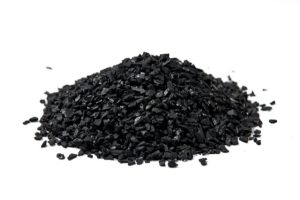In industrial and environmental applications, removing contaminants from water is essential to maintaining safety, compliance, and sustainability. One of the most effective methods for water purification is the use of liquid phase granular activated carbon (GAC) vessels. These systems harness the high adsorption capacity of activated carbon to eliminate organic compounds, chlorine, PFAS, and other unwanted substances from liquid streams.
At General Carbon, we understand the importance of clean, safe water, and our high-quality GAC vessels are engineered to meet the most demanding purification challenges. In this guide, we explore all there is to know about liquid phase GAC vessels.
What Are Liquid Phase Granular Activated Carbon Vessels?

Liquid phase GAC vessels are specialized adsorption equipment designed to treat contaminated water by passing it through a bed of granular activated carbon. As water flows through the vessel, the activated carbon adsorbs dissolved organic compounds, chemicals, and other impurities, resulting in cleaner, safer water.
These systems are widely used for drinking water, wastewater remediation, pharmaceutical purification, and even food-grade applications. Depending on the application, vessels can operate under pressurized or atmospheric conditions and may be installed as single units or in series for staged treatment.
How Do Liquid Phase GAC Vessels Work?
Water is pumped through the GAC vessel, where it comes into contact with granular activated carbon. The carbon’s vast surface area and porous structure trap and adsorb contaminants, effectively removing them from the water stream. Over time, as the carbon becomes saturated, it can be replaced or regenerated to restore adsorption efficiency.
Key Features and Benefits of GAC Vessels
For water treatment applications, liquid phase GAC vessels offer several key benefits and features:
- Broad contaminant removal: GAC vessels effectively adsorb a wide range of volatile organic compounds (VOCs).
- Versatility: Suitable for groundwater, stormwater, municipal water, and industrial wastewater treatment.
- Customizable solutions: Available in various sizes and configurations to match specific flow rates and pressure requirements.
- NSF/ANSI Certified: All General Carbon liquid phase activated carbon products are manufactured in NSF/ANSI certified plants, making them ideal for food and drinking water applications.
- Durable construction: Vessels are built with robust materials and coatings to withstand harsh liquid streams and long-term use.
Design Considerations
A properly designed GAC system ensures maximum contaminant removal efficiency and longer operational life. Keep in mind that each application may require specific adjustments based on contaminant type, water quality, and operational goals.
At General Carbon, we work closely with clients to evaluate system requirements and design vessels that can meet specific site needs. Below are the key design considerations.
Empty Bed Contact Time (EBCT)
EBCT refers to the amount of time the liquid remains in contact with the GAC media. It is calculated as the volume of the empty bed divided by the flow rate, and it is usually expressed in minutes.
Longer contact times typically improve adsorption efficiency. However, excessive EBCT can lead to a larger system size than necessary and higher cost, while insufficient contact time can result in incomplete contaminant removal.
For general organics removal, EBCTs of 7 to 10 minutes per adsorber are common, while more complex applications like PFAS may require up to 20 minutes or more. Most liquid phase GAC systems stage two vessels in series.
Flow Rate
Flow rate determines how quickly water passes through the vessel. Too high a flow can cause excessive pressure drop, minimize contact time, and reduce treatment efficiency, while too low a flow may cause channelization. At General Carbon, we size GAC vessels to achieve balanced, uniform flow.
Bed Depth and Carbon Volume
The depth of the carbon bed influences both treatment capacity and service life. Deeper beds provide more adsorption surface area and longer carbon life.
System Configuration
GAC vessels are typically configured in a lead-lag series setup, meaning one vessel is the lead vessel and another is the lag vessel. The lead vessel is the active vessel, and once carbon is spent in this vessel, the lag vessel is rotated to be the lead via a valving/piping head. The spent carbon is then replaced with fresh carbon.
Carbon Selection

Choosing the right carbon type—bituminous, coconut shell, or wood-based—is critical for targeting specific contaminants. We provide guidance on media selection based on water chemistry and treatment goals.
Pressure and Hydraulic Considerations
Vessels must be designed to handle various pressure ratings and include pressure relief devices and drain ports to ensure safe, efficient operation. Head loss and pressure drop should be carefully considered during design so that the vessel maintains flow efficiency over the carbon’s service life.
Liquid Phase GAC Vessel Industrial Applications
Liquid phase GAC vessels serve a wide range of industries, including:
- Drinking water treatment: Removes taste, odor, and organic contaminants to ensure safe, clean drinking water.
- Wastewater remediation: Treats industrial and municipal wastewater to meet regulatory standards.
- Pharmaceutical and chemical purification: Ensures high-purity water for sensitive processes.
- Food and beverage production: Used in food-grade applications for taste, odor, and chlorine removal to maintain product quality and safety.
Essential Adsorption Equipment for Industrial Water Treatment
Liquid phase granular activated carbon vessels are a proven, reliable technology for water purification. With proper design and maintenance, GAC systems offer long service life and excellent performance. Whether you’re treating drinking water, industrial wastewater, or process streams, General Carbon has the expertise and products to deliver clean, safe water—every time.
Our knowledgeable team can help you design and implement a solution that fits your exact requirements. Contact us today for all of your liquid phase activated carbon needs by calling (973) 523-2223.